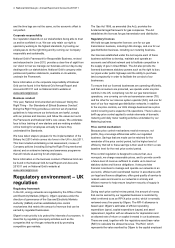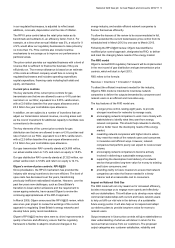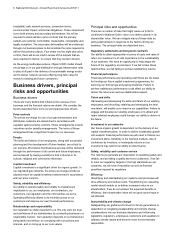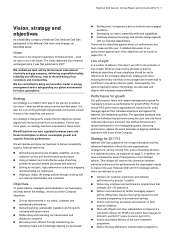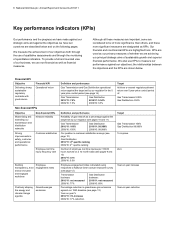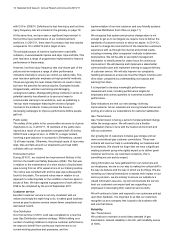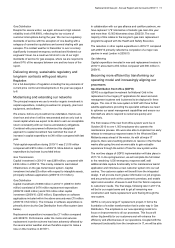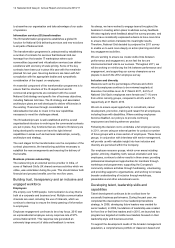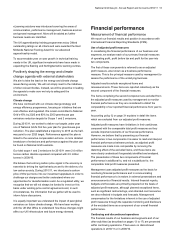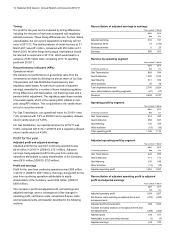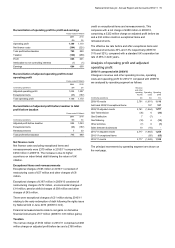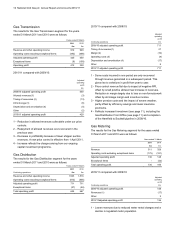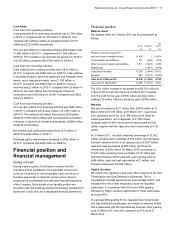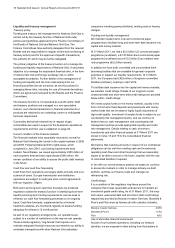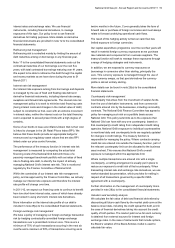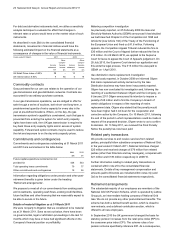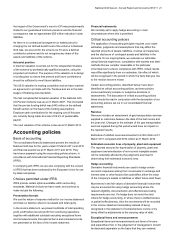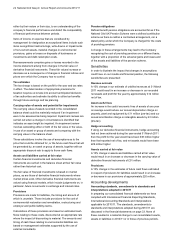National Grid 2011 Annual Report Download - page 15
Download and view the complete annual report
Please find page 15 of the 2011 National Grid annual report below. You can navigate through the pages in the report by either clicking on the pages listed below, or by using the keyword search tool below to find specific information within the annual report.National Grid Gas plc Annual Report and Accounts 2010/11 13
eLearning solutions was introduced covering the areas of
communication, performance management, business acumen
and general management. More will be added as further
business needs are identified.
The UK apprenticeship training programmes enjoy Ofsted
outstanding ratings on all criteria and were awarded the East
Midlands National Training Award for our advanced
apprenticeship model.
To accommodate year on year growth in technical training
needs in the UK, significant investments have been made in
expanding the Eakring and Nottinghamshire learning centres.
Positively shaping the energy and climate
change agenda with external stakeholders
We aim to take the lead on the energy and climate change
issues facing society. We will not simply react to the initiatives
of other relevant bodies. Instead, we will be proactive in leading
the agenda to make sure we help to safeguard the
environment.
Climate change
We have continued with our climate change strategy and
energy efficiency programmes, focusing on initiatives that are
cost effective and regulated. We remain committed to National
Grid’s 45% by 2020 and 80% by 2050 greenhouse gas
emissions reduction targets for Scope 1 and 2 emissions.
During 2010/11, we worked to deliver our targets under year
one of National Grid’s first five year plan for greenhouse gas
reduction. The plan established a trajectory to 2015 as the half-
way point to our 2020 target. Performance against the plan is
linked to the executive compensation scheme. A more detailed
breakdown of emissions and performance against the plan can
be found on National Grid’s website.
Our total scope 1 and 2 emissions for 2010/11 were 2.6 million
tonnes carbon dioxide equivalent compared with 2.5 million
tonnes in 2009/10.
We believe that a strong carbon price signal in the economy is
essential to driving the right behaviours and to the delivery of a
low carbon society. During 2010/11, we introduced a carbon
price of £52 per tonne into our investment appraisals in order to
challenge our designs and better understand where our
opportunities for decarbonisation exist. As a regulated utility, we
recognise that we will not always be funded to invest on this
basis under existing price control agreements and, in such
circumstances, the information that we gather will be used to
inform future discussions.
It is equally important we understand the impact of past global
emissions on future climate change. We have been working
with the UK Met Office to understand how these changes might
affect our UK infrastructure and future energy demand.
Financial performance
Measurement of financial performance
We report our financial results and position in accordance with
International Financial Reporting Standards (IFRS).
Use of adjusted profit measures
In considering the financial performance of our business and
segments, we analyse each of our primary financial measures
of operating profit, profit before tax and profit for the year into
two components.
The first of these components is referred to as an adjusted
profit measure, also known as a business performance
measure. This is the principal measure used by management to
assess the performance of the underlying business.
Adjusted results exclude exceptional items and
remeasurements. These items are reported collectively as the
second component of the financial measures.
The items comprising the second component are excluded from
the adjusted profit measures used by management to monitor
financial performance as they are considered to distort the
comparability of our reported financial performance from year to
year.
Accounting policy Q on page 31 explains in detail the items
which are excluded from our adjusted profit measures.
Adjusted profit measures have limitations in their usefulness
compared with the comparable total profit measures as they
exclude important elements of our financial performance.
However, we believe that by presenting our financial
performance in two components it is easier to read and interpret
financial performance between periods, as adjusted profit
measures are made more comparable by removing the
distorting effect of the excluded items, and those items are
more clearly understood if separately identified and analysed.
The presentation of these two components of financial
performance is additional to, and not a substitute for, the
comparable total profit measures presented.
Management uses adjusted profit measures as the basis for
monitoring financial performance and in communicating
financial performance to investors in external presentations and
announcements of financial results. Internal financial reports,
budgets and forecasts are primarily prepared on the basis of
adjusted profit measures, although planned exceptional items,
such as significant restructurings, and stranded cost recoveries
are also reflected in budgets and forecasts. Management
compensates for the limitations inherent in the use of adjusted
profit measures through the separate monitoring and disclosure
of the excluded items as a component of our overall financial
performance.
Continuing and discontinued operations
The financial results of our business and segments and of our
other activities (as described on pages 13 to 17) are presented
within continuing operations. There were no discontinued
operations in 2010/11 or in 2009/10.



